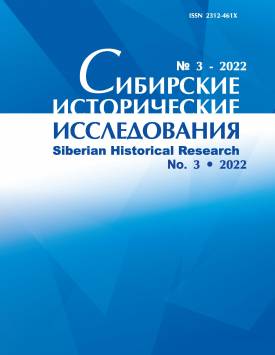Muslim Space of the Moscow Region and Migration: Fragmentation, Diversification, Integration
The Muslim space of Russian cities in the last two decades is determined primarily by migration processes. A significant part of the active and observant Muslims in the two capitals, large cities of Central Russia and Siberia are people from the countries of Central Asia. The study is devoted to the role of migration in the formation of local Muslim spaces in Moscow, as well as the dynamics of the position of migrants from Central Asia in mosques and prayer houses of the city. An increasing number of immigrants, primarily from Tajikistan and Kyrgyzstan, occupy key positions in local Muslim communities. Migrant religious authorities do not just integrate into the Muslim institutions of the capital region, but form local Muslim spaces, create their own organizations, build their own hierarchies and determine the religious everyday life of parishioners. I consider the religious self-realization of the Central Asian Muslim authorities in Moscow mosques and prayer houses as an integration process that leads to the diversification of the capital's Muslim space. The author declares no conflicts of interests.
Keywords
religious authority,
ethnic diversity,
integration,
migration from Central Asia,
Islam in RussiaAuthors
| Oparin Dmitriy A. | National Research University "Higher School of Economics" | dimaoparin@hotmail.com |
Всего: 1
References
Sunier Th. The making of Islamic authority in Europe // Imams in Western Europe. Developments, Transformations, and Institutional Challenges, ed. Mohammed Hashas, Jan Jaap de Ruiter, Niels Valdemar Vinding. Amsterdam: Amsterdam University Press, 2018. P. 51-68
Schinkel W. Imagined Societies: A Critique of Immigrant Integration in Western Europe. Cambridge: Cambridge University Press, 2017
Sozeri S., Altinyelken H.K., Volman M.L.L. The role of mosque education in the integration of Turkish-Dutch youth: perspectives of Muslim parents, imams, mosque teachers and key stakeholders // Ethnic and Racial Studies. 2022. No. 45(16). P. 122-143
Oparin D. Spiritual Authority and Religious Introspection among Muslim Migrants in Western Siberia // Problems of Post-Communism. 2020. Vol. 67 (4-5). P. 362-374
Peucker M., Ceylan R Muslim community organizations - sites of active citizenship or selfsegregation? // Ethnic and Racial Studies. 2017. No. 40 (14). P. 2405-2425
Maliepaard M., Phalet K. Social Integration and Religious Identity Expression Among Dutch Muslims: The Role of Minority and Majority Group Contact // Social Psychology Quarterly. 2012. No. 75 (2). P. 131-148
Kashnitsky D., Demintseva E. ‘Kyrgyz Clinics’ in Moscow: Medical Centres for Central Asian Migrants // Medical Anthropology: Cross Cultural Studies in Health and Illness. 2018. Vol. 37, No. 5. P. 401-411
Brunarska Z., Denisenko M.Russia: A ‘Hidden’ Migration Transition and a Winding Road towards a Mature Immigration Country? // Central and Eastern European Migration Review. 2021. Vol. 10, No. 1. P. 171
Akhtar P. “We Were Muslims but We Didn’t Know Islam”: Migration, Pakistani Muslim Women and Changing Religious Practices in the UK // Women’s Studies International Forum. 2014. No. 47. P. 232-238
Флоринская Ю. Ф. Социология и статистика не показывают наличие негативных трендов в трудовой миграции // Мониторинг экономической ситуации в России. М.: Инт эконом. политики им. Гайдара, 2022. URL: https://www.iep.ru/ru/monitoring/sotsiologiya-i-statistika-ne-pokazyvayut-nalichie-negativnykh-trendov-v-trudovoy-mig-ratsii.html
Мкртчян Н.В., Флоринская Ю.Ф. Миграция: основные тренды января-февраля 2021 года // Мониторинг экономической ситуации в России. Тенденции и вызовы социально-экономического развития. 2021. № 10 (142)
Опарин Д.А. Долг и лояльность среднеазиатских мулл в миграции // Этнографическое обозрение. 2021. № 3. С. 149-167
Варшавер Е.А., Рочева А.Л., Иванова Н.С., Андреева А.С. Мигранты в российских городах: расселение, концентрация, интеграция. М.: Дело, 2021

